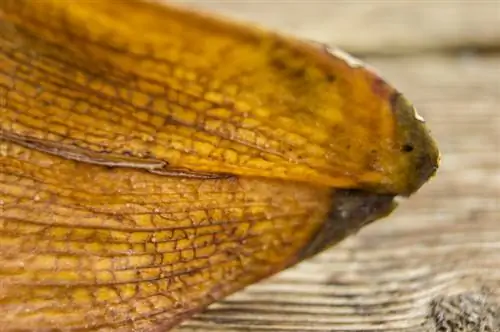- Author admin [email protected].
- Public 2023-12-16 16:46.
- Last modified 2025-01-23 11:20.
Despite its exotic origins, the African lily Agapanthus is relatively undemanding when it comes to care as a container plant. If your African lily ever develops yellow leaves, this can have various causes.

Why does my African lily get yellow leaves during the winter?
Yellow leaves on an African lily during overwintering can be due to natural leaf loss, excessive root growth, waterlogging or sunburn. To keep the plant he althy, ensure adequate drainage and adjust care accordingly.
Overwintering leaf-feeding agapanthus
All types of African lily are generally not hardy outdoors in this country. However, there are various subspecies of the African lily that are either evergreen or only overwinter as root rhizomes. The so-called leaf-feeding agapanthus get more and more yellow leaves in autumn, which can be cut off when putting them away for winter quarters.
Yellowing of leaves during the growing season
If your African lily gets yellow leaves during the spring and summer season, it may be due to the following reasons:
- the root rhizome has grown strongly and completely fills the planter
- the plants suffer from waterlogging
- After wintering the leaves got sunburnt
Since African lilies do not like waterlogging, several holes in the lower area of the planter should ensure that excess liquid can drain unhindered.
Tips & Tricks
You should hibernate ornamental lilies in April or May when the weather is as cloudy as possible, otherwise sunburn can occur, which becomes noticeable in the form of yellow spots.






